Brian N. Young's Blog, page 9
October 26, 2012
The Giant's Wrath (Module #3) is now in Digital Format!
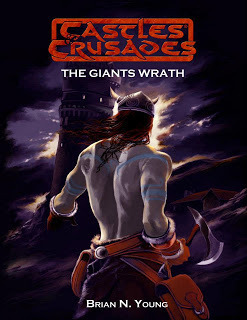
Castles & Crusades
Giant’s Wrath
Product Type/Format & Price: 8.5 x 11 Saddle Stitched, 24 pages; $6.99
Ordering Info: TLG 8323, ISBN 978-1-936822-54-6
Beyond the comforts of home lie worlds of epic adventure.
In the grey seas and dark skies of turbulent chaos, you see a long black dragon-shaped ship. A dozen massive oars on each side row to the beat of a thundering drum. Tall, harsh-faced, dark-hued, and fully-armored forms walk the deck, shouting orders in terrifying voices. . . the formorians come again.
A power has risen in the Otherworld, it drives the storms upon the shores with such force that they batter the earth and grind the rocks. Those ill-fortuned enough to dwell near the sear hide in terror at the fury of the storm unleashed. But it is not the storm they fear, it is the giants that ride the foamy surf. Formorians! Giants of the old world they come, riding long ships across the mad-capped seas to surging up against the settlements of men; raiding wit wild abandon, plundering, burning, hauling off treasures and slaves with few to impede their crimes.
But there is method here, something, or someone drives the formians, pushing them to reckless heights. Who and why are tangled in the intrigues of local lords, wizards and their sons. It is yours to unravel the Gordian knot that is The Giants Wrath.
This adventure is about the terrible raiding the Sea Giants are doing to the coastal villages in the Mortal world and the sinister plans of their leader, a Human wizard called the Stormgazer. In the progress of these adventures, the characters must make their way across the seas to the Otherworld to confront the wizard and his Giants and put an end to the terror.
This story deals with many strands of Celtic mythology, both Irish and Welsh, and places them in the context of a fantasy setting that is easily integrated into Castle & Crusades’ Aihrde. This series of adventures places the characters into a tough and brutal story where there is little subtlety once the blood begins to flow.
Published on October 26, 2012 14:26
The Giant's Wrath (Module #3) is Almost Here!

Castles & Crusades
Giant’s Wrath
Product Type/Format & Price: 8.5 x 11 Saddle Stitched, 24 pages; $6.99
Ordering Info: TLG 8323, ISBN 978-1-936822-54-6
Beyond the comforts of home lie worlds of epic adventure.
In the grey seas and dark skies of turbulent chaos, you see a long black dragon-shaped ship. A dozen massive oars on each side row to the beat of a thundering drum. Tall, harsh-faced, dark-hued, and fully-armored forms walk the deck, shouting orders in terrifying voices. . . the formorians come again.
A power has risen in the Otherworld, it drives the storms upon the shores with such force that they batter the earth and grind the rocks. Those ill-fortuned enough to dwell near the sear hide in terror at the fury of the storm unleashed. But it is not the storm they fear, it is the giants that ride the foamy surf. Formorians! Giants of the old world they come, riding long ships across the mad-capped seas to surging up against the settlements of men; raiding wit wild abandon, plundering, burning, hauling off treasures and slaves with few to impede their crimes.
But there is method here, something, or someone drives the formians, pushing them to reckless heights. Who and why are tangled in the intrigues of local lords, wizards and their sons. It is yours to unravel the Gordian knot that is The Giants Wrath.
This adventure is about the terrible raiding the Sea Giants are doing to the coastal villages in the Mortal world and the sinister plans of their leader, a Human wizard called the Stormgazer. In the progress of these adventures, the characters must make their way across the seas to the Otherworld to confront the wizard and his Giants and put an end to the terror.
This story deals with many strands of Celtic mythology, both Irish and Welsh, and places them in the context of a fantasy setting that is easily integrated into Castle & Crusades’ Aihrde. This series of adventures places the characters into a tough and brutal story where there is little subtlety once the blood begins to flow.
Published on October 26, 2012 14:26
October 25, 2012
Twrch Trwyth - The Boar of the Hunt
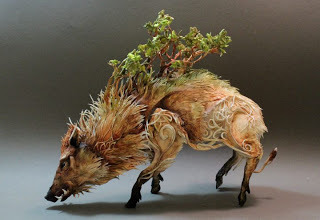
Twrch Trwyth (originally Trwyd), the supernatural boar, is best known as the climactic 'anoeth' (difficult task) set for Arthur and his heroes (including Mabon fab Modron) in ‘Culhwch and Olwen’, and the chase across south Wales (Cymru) and over the Severn estuary to Cernyw (Kernow) is used as a framework for inserting many accounts of remarkable localities and place-names. The hunt of Yskithyrwyn Penn Beidd (‘White-tusk Chief Boar’) can be understood as a narrative doublet, artfully building the mood for the mightier boar hunt to follow. Twrch Trwyth itself has a band of seven lethal offspring: Banw (young pig), Bennwic , Grugyn Gwrych Ereint (Grugyn silver bristles), Llwydawc Gouynnyat (Llwydawc the hewer), Twrch Llawin , Gwys , and one unnamed boar. As well as being remarkable for his size and destructiveness and carrying between his ears the comb, razor, and shears demanded by Ysbaddaden the giant, Twrch Trwyth is said to be the son of the king Taredd Wledic ; according to Arthur, he was ‘a king transformed by God into a hog (hwch) for his sins’ (cf. reincarnation; Math fab Mathonwy). The fact that Trwyth is not killed in the story but driven back out to sea may mean that the storyteller and his audience knew of the boar’s presence in subsequent adventures, now lost.
Like Arthur’s wife Gwenhwyfar, corresponding to Irish Findabair, and his sword Caledfwlch, Irish Caladbolg, Twrch Trwyth is equivalent to orc tréith, explained as ‘a king’s son’ in Sanas Chormaic (‘Cormac’s Glossary’). Old Irish orc means ‘young pig’ and tríath (gen. tréith) can mean either ‘king’ or ‘boar’. In the Middle Irish tract ‘The Tuath Dé Miscellany’, edited by Carey (BBCS 39.24–45), we find Triath rí torcraide (Triath king of the boars). The Welsh spelling trwyt (Modern trwyd), which does occur, could be the exact cognate of triath, implying Common Celtic *tritos. Therefore, although a common inheritance of loan from Welsh to Irish is not easily disproved, the Irish Torc Triath is pivotal to the theory of a kernel of Irish material near the starting-point of the Arthurian tradition.
Arthur’s hunt of Porcum Troit and other places and episodes found in Culhwch are mentioned in south Walian contexts in the mirabilia (marvels) of the 9th century Historia Brittonum. Therefore, some version of this part of the story was already well known and localized that early. This evidence is consistent with Padel’s theory of an originally unhistorical character who began as a figure in local folklore (cf. Arthurian sites). The allusion to Trychdrwyt (attacked in a river for his valuables) in Gwarchan Cynfelyn in Llyfr Aneirin, as well as other occurrences in poetry, show that the correct original name was Trwyd, Trwyth originating as a scribal error.-------------------------------------------------------------------------------------------------
I plan to take this story, in its fragments and make an adventure module based around this hunt. The players will be not only involved in it along with Arthur and his warriors, but also have their own side adventures and story-lines on the side. In my recent Arthurian campaign I integrated this into the main story and it was a memorable series of adventures that gave many brilliant moments and memories. Look for this at module #7 in the next few months, after the next few come out!
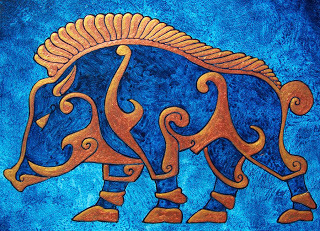
Published on October 25, 2012 18:30
October 20, 2012
The Coming of the King - The Greatest Novel I Believe
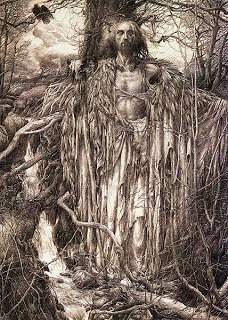
I am a fan of Lovecraft, Howard and Tolkien above all others, but the one novelist that played a major influence in recent times was Nikolai Tolstoy and his amazing book ' The Coming of the King '. Published in 1988 by Count Tolstoy, a descendant of the famous Russian literary family. Nikolai, or Nikolai Dmitrievich Tolstoy-Miloslavsky, is a Celtic scholar who has done lengthy studies on the possible real figure of Myrddin Wyllt from early Northern Welsh lore and literature. He is fond of when Britain was still Celtic speaking (as I am as well), and has written superior works in that field.
His academics were and are an inspiration to me on my own Celtic studies and direction to this day. His novel however, ' The Coming of the King ' is part one of planed trilogy centered around the mythical and historical life of Myrddin Wyllt according to the early sources. The perspective in which he composed the novel is unique and is not as direct as it seems. Although essentially from Myrddin's perspective, it changes throughout as the story goes, and follows King Maelgwn of Gwynedd, Ceneu, and the Saxons as well. Ingeniously written and complex, it isn't something for a quick read on an afternoon, but is meant for a dedicated readership that will devote time to it, to better soak in the words and atmosphere.
Tolstoy wrote this in manner of sentence, grammar and logic that is inspired from the Welsh prose tales and poems, and it shows. Even in the section with the Saxons it captures the feel and style of the early Anglo-Saxon literature and helps to give the reader a sample of those worlds. It takes some getting used to when you are unfamiliar with those traditions, and in the beginning I was completely unfamiliar with it all. Now, twenty-four years later I am absolutely familiar with it all. So much that I have a Masters in the fields (Cum Laude) from Prifysgol Cymru Llanbedr-Pont-Steffan in 2007.
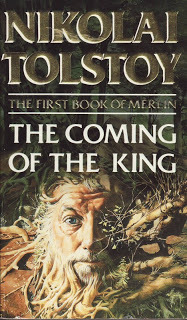
This book was my gauge in my early years on how knowledgeable I was becoming in my studies, because in the early years of my research (1986-95) I was just acquiring the Celtic languages (Scottish Gaelic, Irish and Cornish at the time) and a complete understanding of the whole field. My focus was 'Arthurian' Britain in the 5th and 6th centuries after Rome's fall. As my knowledge base, so did my full grasp of Tolstoy's novel. He wrote it such a way that a scholar will gain marvelous insights if they do not have said data yet, and I did, eagerly.
As he mentioned in his interview given to Rochester University not long ago about the first novel in the series:
RT: As an historian, how do you feel about your novel?
NT: I hope it's better than The Quest for Merlin as history, because I've done more work and I can do things in it which I could not in the other. After all, at the end of The Quest for Merlin what have I established? If I've established anything--if any historian establishes anything--there's always somebody who'll come along later, as no doubt I shall myself, and find things that are incorrect. Moreover you are establishing, especially in the Dark Age period, rather small points really. There's very little more you can establish.
The whole novel takes place around the year 556, when a battle is mentioned in The Anglo-Saxon Chronicle: "In this year Cynric and Ceawlin fought against the Britons at Beranburh." It doesn't even say who won. That's a mere footnote, and there's nothing you can add to it in a historical way. Yet it doesn't matter whether the succession of events I have described happened exactly in the way they did. Clearly they didn't because some of them I have invented. The inventions, the bricks, are all from the sixth century as I see it, however. Whether the edifice is sixth century is for the reader to judge but, as with all history, that's not altogether relevant, I think.
On a more prosaic level, I would say that the novel is better history, because I actually have to find out things which the historian doesn't need to find out. I didn't realize that until I was writing the novel. To carry conviction, I must first believe, and because I enjoy it, I do more research for the novel than I would for a straightforward historical work. If I come up against something which I simply cannot understand, the whole novel grinds to a halt, as does my income, whilst I wrestle with the problem.
Tolstoy has planned, for the last twenty years since this novel, to publish the other two in the trilogy, ' The Thirteen Treasures ' and the final where Myrddin meets his fate of a Triple Death in Coed Celyddon. I had been hoping and looking for these books for two decades and there are not out. I recently find out that he has denied publishing them over some matter concerning War Crimes that concern England and the Russians during WW 2. I suppose that until that is resolved he will not release them. It is a shame.
This novel is one of the few that I completely adore because it is a good story, brilliant academically, and defines what I am and the field of studies that I am into, all wrapped up in one book. I haven't dug out my large hardback edition until recently, when I began to resume my Celtic British works and novel project, and now I am shocked that I have withheld from reading it for so long. My own trilogy planned around the same period of history and myth isn't out to establish historical elements but to tell a good story with a new view on the Otherworld, that in my opinion has been poor for so long.
Read a copy of it if you can, and enter into Tolstoy's book with an open mind ready to be see 'Arthurian' Britian closer to how the Dark-Age Celts did that is closer to its reality, or what it would have been.
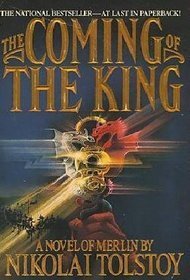
Published on October 20, 2012 16:26
October 19, 2012
Writer's Doubt - What is it?
(In Brief)On Wednesday at the EODLS Staff Development Day conference the question was brought up about 'writer's block'. How did each of us three authors deal with it when it comes? For me personally I never suffer from the problem but I do have days when there are too many distractions and mundane affairs that get in the way of my writing, denying me a chance to do anything like I want. But the one thing I DO have is what I call 'Writer's Doubt.'
What it is is my strong doubt and lack of belief in my own works and ideas. It is partway hyper-criticism and partly an inferiority matter, not believing in my own work, feeling it is not worthy. It is the problem that I could be at 95% near completion on my project and suddenly have this massive doubt about it, thinking that no one else will see what I do in the project and that maybe I am just fooling myself about it.
Deriving from a background as an artist, I would often scrap an entire drawing before it was done because certain elements of it I do not agree with or like how I composed it. This happened many times in my art years and it stems from a perfectionists' standpoint. In writing it is essentially the same idea but in literary form and can kill an idea that might have lots of potential. For every book and project of mine there has been many more that were thrown away because I had doubt and never even saw the outline stage of my efforts.
Nowadays I am still suffering from the Writer's Doubt every step of the way, and it kills my enthusiasm or drive to further a project. I think that this is worse than Writer's Block in the end, mainly because it can prevent a project from ever being finished, whereas with Writer's Block it will eventually pass and the project can go on conceivably The ultimate answer to the question of, 'Is the project good enough?' is in the reaction by others upon reading it. If they like it and find it good and interesting, that is why it must go on. Sometimes we who write and create art will become too selfish and forget that what we are making ends up in the hands in others who are the fans eventually. Initially we do these things for ourselves but it is for those who like it when it is said and done, the fans or such literature (whatever the genre).
I have heard that if you do not believe in your work, it will never see the light of day or completion and it is not 'meant to be'. I have a novel project that has sat for 14 years and was never finalized because I was too afraid of it being poorly received by others. It is a dear project with a lot of history and sentimental importance to me, but I am changing my way of thinking on this now and finishing it. I will take a risk on it after it is done and see what happens in peoples' reactions and comments. THAT is the scary part of it. The negativity is what I am afraid of, more on this project than on any other of mine.
So if you have a doubt on your work that is so bad that is denies you seeing its completion, go ahead and ignore the biting doubt and finish it all. No matter what at least you have the story done regardless if it ever gets handed in.
The next step is to skip the Writer's Doubt when submitting it to a publisher or an agent...
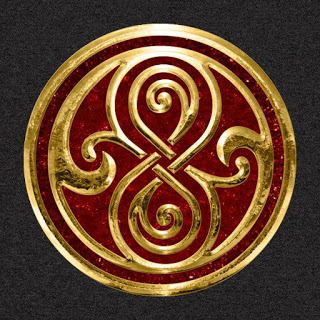

What it is is my strong doubt and lack of belief in my own works and ideas. It is partway hyper-criticism and partly an inferiority matter, not believing in my own work, feeling it is not worthy. It is the problem that I could be at 95% near completion on my project and suddenly have this massive doubt about it, thinking that no one else will see what I do in the project and that maybe I am just fooling myself about it.
Deriving from a background as an artist, I would often scrap an entire drawing before it was done because certain elements of it I do not agree with or like how I composed it. This happened many times in my art years and it stems from a perfectionists' standpoint. In writing it is essentially the same idea but in literary form and can kill an idea that might have lots of potential. For every book and project of mine there has been many more that were thrown away because I had doubt and never even saw the outline stage of my efforts.
Nowadays I am still suffering from the Writer's Doubt every step of the way, and it kills my enthusiasm or drive to further a project. I think that this is worse than Writer's Block in the end, mainly because it can prevent a project from ever being finished, whereas with Writer's Block it will eventually pass and the project can go on conceivably The ultimate answer to the question of, 'Is the project good enough?' is in the reaction by others upon reading it. If they like it and find it good and interesting, that is why it must go on. Sometimes we who write and create art will become too selfish and forget that what we are making ends up in the hands in others who are the fans eventually. Initially we do these things for ourselves but it is for those who like it when it is said and done, the fans or such literature (whatever the genre).
I have heard that if you do not believe in your work, it will never see the light of day or completion and it is not 'meant to be'. I have a novel project that has sat for 14 years and was never finalized because I was too afraid of it being poorly received by others. It is a dear project with a lot of history and sentimental importance to me, but I am changing my way of thinking on this now and finishing it. I will take a risk on it after it is done and see what happens in peoples' reactions and comments. THAT is the scary part of it. The negativity is what I am afraid of, more on this project than on any other of mine.
So if you have a doubt on your work that is so bad that is denies you seeing its completion, go ahead and ignore the biting doubt and finish it all. No matter what at least you have the story done regardless if it ever gets handed in.
The next step is to skip the Writer's Doubt when submitting it to a publisher or an agent...

Published on October 19, 2012 17:32
October 17, 2012
An Update On Projects - Published/Forthcoming
This is just a reminder of what is to come in the next six months, plus what has been published. Dates on the forthcoming books are not certain yet, but will be given once I know them, only a few with Damnation Books have dates.
My current published books are:
'Lyver-Lywans Bukkyas Keltek' (Spyrys a Gernow - 1999)
'De Civitate Sanguino' (Xlibris Fall 2009/March 1st Damnation Books 2012)
'The Witch of Round Mountain' (Damnation Books -September 1st 2012)
'The Goblins of Mount Shadow' (Troll Lord Games - August 1st)
'The Crimson Pact' (Troll Lord Games - September 24th 2012)
(FORTHCOMING)
'The Giant's Wrath' (Troll Lord Games - October/November 2012)
'The Vampire's Code' (Damnation Books - Dec. 1st 2012)
'Codex Celtarum' (Troll Lord Games - Late November 2012)
'The Axis of Shadows' (Damnation Books - March 1st 2013)
'Bring Me the Head of the Preacher Man (Damnation Books - March 1st 2012)
'Codex Germania' (Troll Lord Games - Winter/Spring 2013)
'To Kill a King' (Troll Lord Games - November 2012)'Codex Nordica' (Troll Lord Games - Winter 2012/13)'Night of the Spirits' (Troll Lord Games - Winter 2012)
'The Girl with the Rainbow Eyes' (Publisher Pending - 2013)
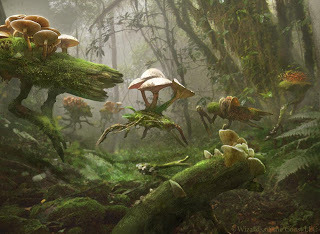

My current published books are:
'Lyver-Lywans Bukkyas Keltek' (Spyrys a Gernow - 1999)
'De Civitate Sanguino' (Xlibris Fall 2009/March 1st Damnation Books 2012)
'The Witch of Round Mountain' (Damnation Books -September 1st 2012)
'The Goblins of Mount Shadow' (Troll Lord Games - August 1st)
'The Crimson Pact' (Troll Lord Games - September 24th 2012)
(FORTHCOMING)
'The Giant's Wrath' (Troll Lord Games - October/November 2012)
'The Vampire's Code' (Damnation Books - Dec. 1st 2012)
'Codex Celtarum' (Troll Lord Games - Late November 2012)
'The Axis of Shadows' (Damnation Books - March 1st 2013)
'Bring Me the Head of the Preacher Man (Damnation Books - March 1st 2012)
'Codex Germania' (Troll Lord Games - Winter/Spring 2013)
'To Kill a King' (Troll Lord Games - November 2012)'Codex Nordica' (Troll Lord Games - Winter 2012/13)'Night of the Spirits' (Troll Lord Games - Winter 2012)
'The Girl with the Rainbow Eyes' (Publisher Pending - 2013)

Published on October 17, 2012 19:38
Eastern Oklahoma District Library System's Staff Day (10/17/12)
Today I had the honor of being one among a few Oklahoma authors picked to speak to over 150+ librarians in the Eastern Oklahoma District Library System's Staff Development conference in Muskogee. I was given a chance to explain the writing process from my perspective, have a great lunch with this excellent company and to spread the word about my projects and publications to be.
The questions we were given were:Where and when do you like to write?What is the hardest part of writing for you?Assuming you have experienced writers block, what is your solution?What advice do you have for someone starting out?How do you come up with story ideas?What is the best thing about being a writer?If you were writing a book about your life, what would the title be?What question have you always wanted to be asked in an interview? How would you answer that question?What are you working on now?I have a few friends who are authors and I have had them put quirks and qualities of my personality or things I have said in their books, do you do this with people in your lives?
It was a rare opportunity that I hope becomes more regular as time goes on. There is nothing like being able to express one's angle in writing and how it is done and composed to people eager to know. Writers often do not get to express themselves besides their works, and it is so cathartic. Usually we are recluses, hidden away on our computers and typewriters trying to create something engaging and interesting, and once in a while a hit or a huge success if we are able.
I will post the photos once I have them uploaded and place them here and on my blog. This is definitely a milestone in my career, and I hope to have more along the way.The other two authors I shared the day with was Sonia Gensler and Gene Ruth Brumback, both completely opposite to me, my style and gender, leaving me the only guy there as an author. Sonia has written ' The Revenant ', a Horror story that takes place in Tahlequah at the old Cherokee Girls' School, mixed with double identities, forbidden romance and plenty of secrets. Gene writes a weekly devotional column for the Muskogee area paper and has collected them together in one book called ' Sewing Seeds, Pulling Weeds '.
The questions we were given were:Where and when do you like to write?What is the hardest part of writing for you?Assuming you have experienced writers block, what is your solution?What advice do you have for someone starting out?How do you come up with story ideas?What is the best thing about being a writer?If you were writing a book about your life, what would the title be?What question have you always wanted to be asked in an interview? How would you answer that question?What are you working on now?I have a few friends who are authors and I have had them put quirks and qualities of my personality or things I have said in their books, do you do this with people in your lives?
It was a rare opportunity that I hope becomes more regular as time goes on. There is nothing like being able to express one's angle in writing and how it is done and composed to people eager to know. Writers often do not get to express themselves besides their works, and it is so cathartic. Usually we are recluses, hidden away on our computers and typewriters trying to create something engaging and interesting, and once in a while a hit or a huge success if we are able.
I will post the photos once I have them uploaded and place them here and on my blog. This is definitely a milestone in my career, and I hope to have more along the way.The other two authors I shared the day with was Sonia Gensler and Gene Ruth Brumback, both completely opposite to me, my style and gender, leaving me the only guy there as an author. Sonia has written ' The Revenant ', a Horror story that takes place in Tahlequah at the old Cherokee Girls' School, mixed with double identities, forbidden romance and plenty of secrets. Gene writes a weekly devotional column for the Muskogee area paper and has collected them together in one book called ' Sewing Seeds, Pulling Weeds '.
Published on October 17, 2012 17:35
October 16, 2012
Why I am Who I Am (Part 2)
By the year of 1980 many things were taking form in my mind making me fall into who I am through my beginnings of artistic expression. After discovering the musical side to my interests (the early phase of it) and acquiring books on horror and fantasy I started to illustrate dragons, barbarians and castles in my own rough way as an eight year old kid.
One of my great interests was in dinosaurs as a kid, I was nuts about them and collected every toy, fossil and book I could find. I drew them constantly and found a way to incorporate their appearance into a dragon's. Because of this, I wanted to be a Paleontologist when I grew up. Every day I imagined encountering a rare living dinosaur. Growing up and being groomed into being a bow-hunter, I camped a lot as a kid and spent my hours envisioning them stomping through the woods and in the water.
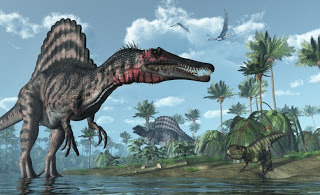
In the next year after a KISS album came out that really fired up my interest in fantasy. Although generally shunned by many, the Elder was a big influence on me. It was meant to be a soundtrack-like album to a film that was not yet made and it fired my imagination up. But even though this album was in the glam and flashier period of KISS's later history in the 70's when they were becoming trendy and disco-like (KISSco is what I call it), my interest in them was waning as I discovered the music that utterly defined me, and still does today.
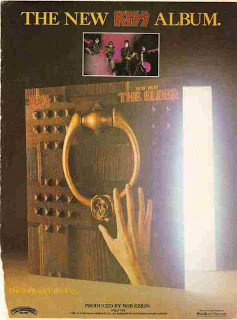
(An earlier post of mine refers to this in detail). I had found Richie Blackmore's Rainbow , the first era with Dio singing and it was a revelation to me, and epiphany, that this was my calling. I snatched the first albums up rapidly and soaked in every second of them. My mind was driven wild with ideas but only my art to express them, and I wasn't that skilled to do so. It was also in this time that I found the group Rush . This proliferation of fantasy and medieval themed music fueled me for hopeful great things to come.
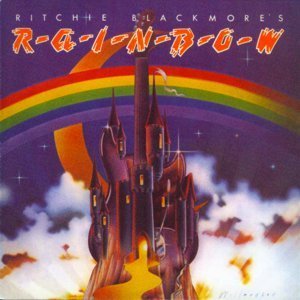
Combining this new fueled interest in the direction of fantasy and all things medieval, I also found metal gaming figurines in a local hobby show and with that the many game books ( Monster Manual, Deities & Demi-Gods , etc) and was fascinated by the artwork even though I was not into gaming yet, or even knew or comprehended what it was at the time. I just knew that these books and figs were amazing and I could not imagine what else they were meant for except to inspire. And they did.
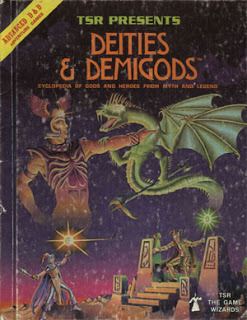
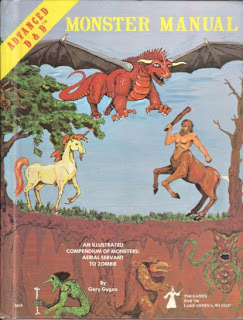
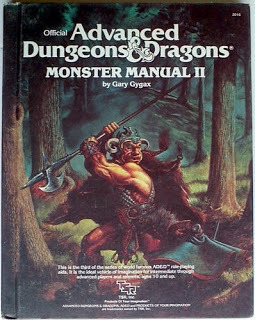
It would be many years before events fell together in just the right way that led me to gaming and to my Celtic studies. It wasn't until 1984 that I first understood what role-playing games were and the purpose of those figs and books. My best friend at the time named Tommy was given a copy of MERP (Middle-Earth Role-Playing) for Christmas. His parents assumed it was a board game but no one could figure it out. They bought him the adventure module "Bree and the Barrowdowns' as well for it.
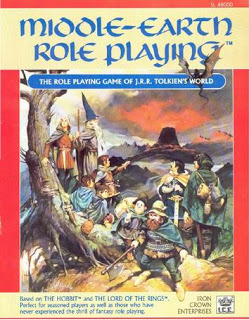
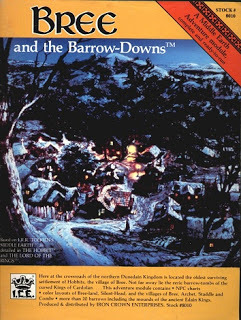
Frustrated, Tommy let me have it to figure out, and after a few months of reading the examples in the book on game play it clicked. I ran him through a sample game and it all made sense to me powerfully. I found one of the best avenues to channel my constant and rapid imagination in one place. Role-playing games! The rules were overly complicated and were frankly a mess, but it opened my eyes to the whole subculture that was swirling under the surface and I was too young to know it.
After that I found a local gaming group in town that gamed every Saturday afternoon at our public library called the 'Worldmasters Club'. From there I arrived with the MERP game in hand and found a fellow classmate named JR and ran him in an adventure I devised, dealing with trolls in a cave holding Hobbits captive. The game only lasted a short while but it was the next major point in what became my gaming career.
By the mid-80's I was officially a gamer having to GM my first games and realizing the potential for great stories. I also was growing as an artist and finally began reading fantasy literature on my own, the first book being Robert E. Howard's ' Red Nails ' collection ( I read this around 1982-3). My world was coming together by the time I was going on 14 and it was handy. I did not need any period of 'searching' to find myself as many people did through drugs, alcohol, etc. I FOUND my calling in life.
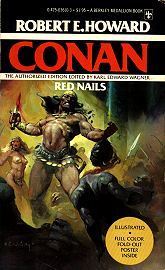
Next I will dive into the hobby at full speed and see what happens....
One of my great interests was in dinosaurs as a kid, I was nuts about them and collected every toy, fossil and book I could find. I drew them constantly and found a way to incorporate their appearance into a dragon's. Because of this, I wanted to be a Paleontologist when I grew up. Every day I imagined encountering a rare living dinosaur. Growing up and being groomed into being a bow-hunter, I camped a lot as a kid and spent my hours envisioning them stomping through the woods and in the water.

In the next year after a KISS album came out that really fired up my interest in fantasy. Although generally shunned by many, the Elder was a big influence on me. It was meant to be a soundtrack-like album to a film that was not yet made and it fired my imagination up. But even though this album was in the glam and flashier period of KISS's later history in the 70's when they were becoming trendy and disco-like (KISSco is what I call it), my interest in them was waning as I discovered the music that utterly defined me, and still does today.

(An earlier post of mine refers to this in detail). I had found Richie Blackmore's Rainbow , the first era with Dio singing and it was a revelation to me, and epiphany, that this was my calling. I snatched the first albums up rapidly and soaked in every second of them. My mind was driven wild with ideas but only my art to express them, and I wasn't that skilled to do so. It was also in this time that I found the group Rush . This proliferation of fantasy and medieval themed music fueled me for hopeful great things to come.

Combining this new fueled interest in the direction of fantasy and all things medieval, I also found metal gaming figurines in a local hobby show and with that the many game books ( Monster Manual, Deities & Demi-Gods , etc) and was fascinated by the artwork even though I was not into gaming yet, or even knew or comprehended what it was at the time. I just knew that these books and figs were amazing and I could not imagine what else they were meant for except to inspire. And they did.



It would be many years before events fell together in just the right way that led me to gaming and to my Celtic studies. It wasn't until 1984 that I first understood what role-playing games were and the purpose of those figs and books. My best friend at the time named Tommy was given a copy of MERP (Middle-Earth Role-Playing) for Christmas. His parents assumed it was a board game but no one could figure it out. They bought him the adventure module "Bree and the Barrowdowns' as well for it.


Frustrated, Tommy let me have it to figure out, and after a few months of reading the examples in the book on game play it clicked. I ran him through a sample game and it all made sense to me powerfully. I found one of the best avenues to channel my constant and rapid imagination in one place. Role-playing games! The rules were overly complicated and were frankly a mess, but it opened my eyes to the whole subculture that was swirling under the surface and I was too young to know it.
After that I found a local gaming group in town that gamed every Saturday afternoon at our public library called the 'Worldmasters Club'. From there I arrived with the MERP game in hand and found a fellow classmate named JR and ran him in an adventure I devised, dealing with trolls in a cave holding Hobbits captive. The game only lasted a short while but it was the next major point in what became my gaming career.
By the mid-80's I was officially a gamer having to GM my first games and realizing the potential for great stories. I also was growing as an artist and finally began reading fantasy literature on my own, the first book being Robert E. Howard's ' Red Nails ' collection ( I read this around 1982-3). My world was coming together by the time I was going on 14 and it was handy. I did not need any period of 'searching' to find myself as many people did through drugs, alcohol, etc. I FOUND my calling in life.

Next I will dive into the hobby at full speed and see what happens....
Published on October 16, 2012 10:53
Codex Celtarum is the official name now!
Because the initial name 'Codex Druidum' seemed limited to many and appeared to appeal only to the druid character class in the game, the title has been changed to recognize the fact that the Celtic codex is covering all classes and a few additional in reality. There are about forty extra high level druidic spells AND the option to turn all of the Faery abilities in the book into a spell list of its own (I call the 'Faery' spell list, that is both and neither arcane nor divine). Faery magic is now a reality with these rules, and can be natural born and inherited abilities or able to be summoned by a sorcerer or druid.
Battle and the Celtic logic and system of it are detailed as well, with the many fighting orders from myth and history (Red Branch, Arthur's Dragons, and the Gaesati for example). Head-hunting and using woad paint rules are given, and a list of twenty combat Adjuncts or 'cleasi' (feats). There is so much in this codex that it will be nearly 200 pages in size!
'Codex Celtarum' means 'Codex of the Celts' and covers more of the mythical Otherworld than the whole of Celtic Europe during the height of their domination of the continent and isles. What is emphasized in the 'real world' however is the Post-Roman era isles of Britain, Ireland, Brittany and those in between during the 5th to 6th centuries on. This is the culture from which the greater part of our understanding of Celtic tales derive since the Gauls, Galatians and other Continental European groups were lost to the past.
Additional supplemental materials will be written to fill in the missing gaps of info (Ogham, Holidays, society, etc), and possibly the addition of many of the Gallic deities. The Dusii are included in the Codex and form a major part of the Otherworld mythology. Who they are derives from Gaulish paganism, and had survived in belief a thousand years after the Celtic Gauls were no longer extant in what turned into France, Belgium, Northern Italy and Switzerland. I conflated them with the mysterious Horned God Cernunnos and took some Celtic idiom and logic to a sensible place.
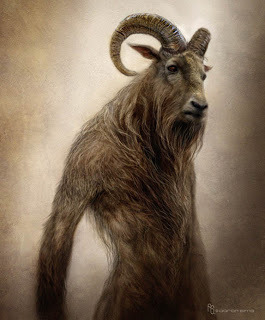
Next in line will be the Codex Germania and Codex Nordica after this first of many codices. I am extremely excited to be chosen in writing these many books detailing the myths and legends with touches of history for gaming. Steve, the Head Troll, has assured me he wants it released by late November! So be ready to dive into the Celtic Otherworld and experience all new ideas and options never had before, I can guarantee you!

Battle and the Celtic logic and system of it are detailed as well, with the many fighting orders from myth and history (Red Branch, Arthur's Dragons, and the Gaesati for example). Head-hunting and using woad paint rules are given, and a list of twenty combat Adjuncts or 'cleasi' (feats). There is so much in this codex that it will be nearly 200 pages in size!
'Codex Celtarum' means 'Codex of the Celts' and covers more of the mythical Otherworld than the whole of Celtic Europe during the height of their domination of the continent and isles. What is emphasized in the 'real world' however is the Post-Roman era isles of Britain, Ireland, Brittany and those in between during the 5th to 6th centuries on. This is the culture from which the greater part of our understanding of Celtic tales derive since the Gauls, Galatians and other Continental European groups were lost to the past.
Additional supplemental materials will be written to fill in the missing gaps of info (Ogham, Holidays, society, etc), and possibly the addition of many of the Gallic deities. The Dusii are included in the Codex and form a major part of the Otherworld mythology. Who they are derives from Gaulish paganism, and had survived in belief a thousand years after the Celtic Gauls were no longer extant in what turned into France, Belgium, Northern Italy and Switzerland. I conflated them with the mysterious Horned God Cernunnos and took some Celtic idiom and logic to a sensible place.

Next in line will be the Codex Germania and Codex Nordica after this first of many codices. I am extremely excited to be chosen in writing these many books detailing the myths and legends with touches of history for gaming. Steve, the Head Troll, has assured me he wants it released by late November! So be ready to dive into the Celtic Otherworld and experience all new ideas and options never had before, I can guarantee you!
Published on October 16, 2012 09:05
October 13, 2012
OWFS - Oklahoma Weird Fiction Society

After seeing that Enid, and the state of Oklahoma in general, does not have a writers' group for people who specialize in the many genres that most writers' clubs do not (Horror, Sci-Fi, Steampunk, and Fantasy), I had to make one happen. There is no other way that this kind of group could be found except to make one a reality.
This is a group that will be a healthy place where authors in Fantasy, Horror, Sci-Fi, Steampunk and other related genres can mingle, share ideas, get peer reviews and feel like they can find inspiration if it is lacking. Often writers of unusual subjects are pressured into isolation because of how strange, or 'weird' their fiction actually is, and this group is a chance to remedy that.
It is hoped that many great and notable authors can spring from this group someday and popularize the idea. There are thousands of writers' groups across the country, most are prestigious and with notoriety, but we hope this humble beginning will, in time, acquire some fame of its own among its members. If this occurs, the OWFS will extend on a national level and include many fun elements in time (but we don't want to get too far ahead of ourselves on this...yet).
Our first goal is to spread the word on it, gain members and then hold meetings. After that, we can go from there into larger places and possibly hold events, etc locally for authors of weird fiction. The standard definition for Weird Fiction is found here.
The blog spot for it is on the banner below, and we will post its members' updates on publications, etc as they come.
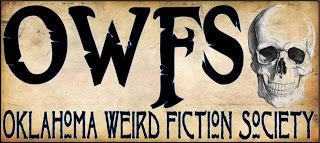
This isn't a group full of stuffy old writers that have a clique and will quickly alienate the odd member that writes things that are not 'Christian literature' or simple poems in origin, but a place where imagination can run wild in like company. We are hoping to have fun in this group and see what happens in time.
Published on October 13, 2012 16:03



